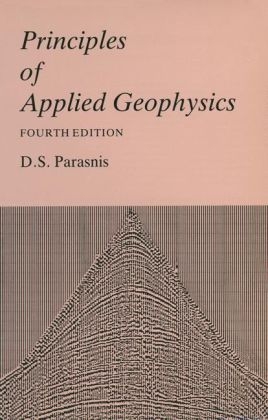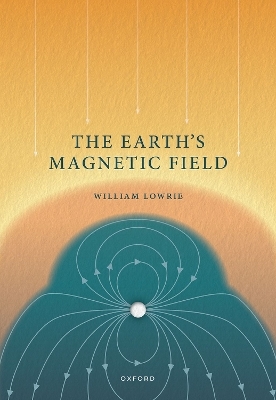
Principles of Applied Geophysics
Chapman and Hall (Verlag)
978-0-412-28330-7 (ISBN)
- Titel erscheint in neuer Auflage
- Artikel merken
Other features of the present edition are solved examples in the text and the problems at the end of all principal chapters. Answers and hints to the latter are given at the end of the book.
1 Introduction.- 2 Magnetic methods.- 2.1 Short history.- 2.2 Basic concepts and units.- 2.3 Magnetic properties of rocks.- 2.4 The geomagnetic field.- 2.5 Instruments of magnetic surveying.- 2.6 Survey layout and field procedure.- 2.7 Relative merits of horizontal, vertical and total-field measurements.- 2.8 Qualitative interpretation of magnetic anomalies.- 2.9 Quantitative interpretation.- 2.10 Effect of demagnetization.- 2.11 Some examples of magnetic investigations.- Problems.- 3 Gravitational methods.- 3.1 Introduction.- 3.2 Gravitational field of the earth.- 3.3 Measurement of gravity: absolute and relative measurements.- 3.4 Gravimeters.- 3.5 Field procedure.- 3.6 Corrections to gravity observations.- 3.7 The Bouguer anomaly.- 3.8 Density determinations.- 3.9 Interpretation.- 3.10 Depth determinations.- 3.11 Some theoretical aspects of gravity interpretation.- 3.12 Determination of total anomalous mass.- 3.13 Vertical derivatives of gravity.- 3.14 Illustrations of gravity surveys and interpretation.- 3.15 Note on marine gravity measurements.- Problems.- 4 Electrical methods.- 4.1 Introduction.- 4.2 Self-potential method.- 4.3 Earth resistivity.- 4.4 Some practical aspects of resistivity work.- 4.5 Vertical electrical sounding (VES).- 4.6 Electrical mapping.- 4.7 Anisotropic earth.- Problems.- 5 Induced polarization.- 5.1 Introduction.- 5.2 Measures of IP.- 5.3 Origin of IP.- 5.4 Electromagnetic coupling.- 5.5 Example of an IP survey.- Problems.- 6 Electromagnetic continuous wave, transient-field and telluric methods.- 6.1 Introduction.- 6.2 Electromagnetic induction.- 6.3 Elliptic polarization.- 6.4 Free-space magnetic fields of low-frequency sources.- 6.5 Near and far fields.- 6.6 Classification of artificial source, continuous wave methods.- 6.7 Near-field CW methods.- 6.8 Far-field methods.- 6.9 Interpretational aids in EM prospecting.- 6.10 Depth penetration.- 6.11 Influence of overburden conductivity.- 6.12 Transient-field methods (time-domain EM).- 6.13 Influence of magnetic permeability.- 6.14 Controlled-source electromagnetic sounding.- 6.15 Natural-field methods.- 6.16 Airborne measurements.- 6.17 Note on the design of electromagnetic coils.- Problems.- 7 Seismic methods.- 7.1 Introduction.- 7.2 Elastic constants and waves.- 7.3 The reflection method.- 7.4 The refraction method.- Problems.- 8 Radioactivity methods.- 8.1 Introduction.- 8.2 Theoretical background.- 8.3 Radioactivity of rocks.- 8.4 Radiation detectors and field procedure.- 8.5 Radon measurements.- 8.6 Radioactive density determinations.- 8.7 Airborne radioactivity measurements.- 9 Well logging in oil fields.- 9.1 Introduction.- 9.2 Permeable zones.- 9.3Archie's law.- 9.4 Permeability-zone logs.- 9.5 Resistivity and conductivity logs.- 9.6 Porosity logs.- 9.7 Auxiliary logs and measurements.- 9.8 Basic log interpretation procedure.- 10 Miscellaneous methods and topics.- 10.1 Borehole magnetometer.- 10.2 Mise-a-la-masse method.- 10.3 Logging in crystalline rocks and coal fields.- 10.4 Geothermal methods.- 10.5 Geochemical prospecting.- 10.6 Optimum point and line spacing.- 10.7 Position location in airborne surveying.- 10.8 Composite surveys.- Appendices.- Appendix 1 The magnetic potential.- Appendix 2 Magnetized sphere and a magnetic dipole.- Appendix 3 Magnetic anomaly of a sphere.- Appendix 4 Measurement of susceptibility and remanence.- Appendix 5 Magnetic potential of a linear dipole and the anomalies of thin and thick sheets 362 Appendix 6 Demagnetization 'factors' for a rectangular parallelepiped.- Appendix 7 Electric potential.- Appendix 8 Apparent resistivities for dipole-diople configurations.- Appendix 9 Potential of a point current electrode on the surface of a horizontally-layered earth.- Appendix 10 Homogeneous, anisotropic earth (derivation of Eq. (4.73)).- Appendix 11 Single-turn loop and other topics in electromagnetic methods.- Appendix 12 Acoustic impedance.- Appendix 13 Fourier transforms and convolution.- References.- Answers and hints.
| Erscheint lt. Verlag | 6.11.1986 |
|---|---|
| Zusatzinfo | 5 black & white illustrations, biography |
| Verlagsort | London |
| Sprache | englisch |
| Maße | 155 x 235 mm |
| Gewicht | 635 g |
| Einbandart | Paperback |
| Themenwelt | Naturwissenschaften ► Geowissenschaften ► Geophysik |
| ISBN-10 | 0-412-28330-1 / 0412283301 |
| ISBN-13 | 978-0-412-28330-7 / 9780412283307 |
| Zustand | Neuware |
| Informationen gemäß Produktsicherheitsverordnung (GPSR) | |
| Haben Sie eine Frage zum Produkt? |
aus dem Bereich



